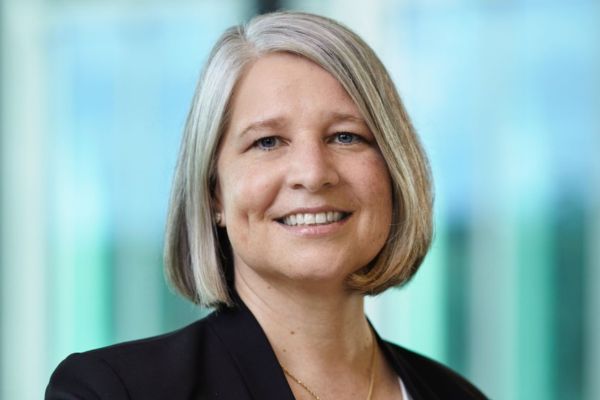Annual Progress Report from the National Cancer Institute
Improving Lives through Research and Innovation, with a Special Focus on Younger Survivors
by Katrina Goddard, PhD, Director, NCI Division of Cancer Control and Population Sciences
It is my honor to provide the 31st annual progress report for Coping. As a division director within the National Cancer Institute (NCI), part of the National Institutes of Health, I help oversee cancer survivorship research efforts across the institute. I value the opportunity to serve the mission of NCI and to meaningfully contribute toward reducing the burden of cancer. I have personally observed the impact of our research, in big and small ways, in making a difference in people’s lives.
NCI leads, conducts, and supports cancer research to advance scientific knowledge and help all people live longer, healthier lives. We seek to better understand the causes of cancer and ways to prevent it, to improve early detection and diagnosis, and to develop more effective, less toxic treatments.
Importantly, NCI strives to improve cancer survivors’ quality of life. A central area of focus includes enhancing the quality and length of survival of everyone diagnosed with cancer, and working to prevent, minimize, or manage the potential negative effects of cancer and its treatment.
NCI defines someone as a cancer survivor from the time of diagnosis until the end of life. There are currently an estimated 18.6 million cancer survivors in the United States, and that number is projected to reach over 22 million in the next 10 years. Simply put, NCI’s work is more important than ever.
For this year’s progress report, I am proud to provide an update on some of the institute’s initiatives to improve the lives of all cancer survivors, no matter where they are in their journey. This brief report includes a special focus on adolescent and young adult (AYA) cancer survivors, a growing population with distinct needs.
Improving adolescent and young adult (AYA) survivorship through research
Cancer research has historically focused on two populations: older adults and children. That’s because most cancers occur among adults 65 and over, and cancer is the leading cause of death by disease in children. While progress across cancer types has been uneven, overall, many advances have been made to improve outcomes for these two groups.
However, nearly 90,000 AYAs — people between ages 15 and 39 — are diagnosed with cancer in the United States each year, and cancer is also the leading cause of disease-related death in this age group.
A cancer diagnosis can derail the lives of AYAs at a particularly vulnerable time, just as they are navigating school, launching careers, building relationships, starting families, or becoming financially independent. In addition to social and career disruptions, AYA survivors may deal with physical side effects of cancer or its treatment, such as infertility and an increased risk of heart disease and other cancers. There is still much work to be done to better serve the estimated 2 million AYA cancer survivors living in the United States.
Aligned with our commitment to AYAs, NCI is working to more fully understand and address increasing rates of early-onset cancers (EOCs). EOCs are cancers diagnosed in people between ages 18 and 49 that are usually found later in life. More research is needed to better understand the risk factors for these cancers that are relevant to younger people. Much of what we are learning from AYA survivorship research, including the progress described below, is likely to benefit people diagnosed with an early-onset cancer.
Findings published this year from the NCI-funded Bright IDEAS-YA clinical trial showed that practical problem-solving skills can help AYAs stave off depression and anxiety during and after cancer treatment. The multisite trial taught participants a structured method for reframing problems as manageable instead of overwhelming. Delivered via telehealth, Bright IDEAS-YA could be scaled to reach more survivors, including those treated in smaller, community cancer centers and clinics.
We’ve also learned a lot about fertility counseling for AYAs. A team of researchers at the University of North Carolina’s Lineberger Comprehensive Cancer Center is working to bring its long-standing, AYA-centered fertility program to other cancer centers to serve more young adults across the country.
Thanks to initiatives like these, AYA survivorship care is evolving toward a more holistic model that goes beyond physical recovery, providing support across life transitions, emotional challenges, and unique health care needs.
Transforming childhood and AYA cancer research
Two initiatives are bringing meaningful change to the way we support research and care for young people with cancer: the Childhood Cancer Survivorship, Treatment, Access, and Research (STAR) Act and the Childhood Cancer Data Initiative (CCDI).
The STAR Act is a federal law that increases opportunities for childhood and AYA cancer research in the United States. It strengthens efforts to better understand late effects of treatment, enhance support for survivors, and expand tissue and blood sample collection and sharing, especially for rare childhood cancers with the least effective treatments. Through implementation of the STAR Act and the STAR Reauthorization Act, NCI has funded more than 30 studies focused on childhood and AYA survivorship, with more on the horizon.
One such study is modeling breast cancer risk among childhood and AYA cancer survivors. This research will help to determine whether risk-reducing medications can improve breast cancer prevention among survivors at increased risk of developing breast cancer as a result of their initial cancer treatment.
Results from this and other AYA-focused studies are emerging, with promises of improved care delivery, more effective side effect management, and novel approaches to enhancing quality of life for young survivors across their lifespan.
Expanding what’s possible
Through CCDI, NCI supports research to ensure that data from every child and AYA diagnosed with cancer can be used to improve care for generations to come. With innovative data-sharing platforms and tools, this program connects and broadly shares clinical care and research data generated by children’s hospitals and networks so that researchers can learn from every child. To date, more than one million data files have been added to the CCDI Hub, where scientists can access data to analyze what starts or contributes to cancer growth in children and AYAs.
Also as part of CCDI, the Molecular Characterization Initiative (MCI) offers molecular testing to children and AYAs with certain cancers to provide precise diagnoses. Looking at cancer at a molecular level helps doctors determine the best, most effective treatment for patients and informs what clinical trials might be appropriate for them. Started just a few years ago, this initiative has guided treatment decisions and clinical trial enrollment for more than 6,000 young patients. MCI is a central initiative within CCDI, and it is supported in collaboration with NCI’s STAR Act implementation efforts. NCI’s STAR Act biobanking projects conduct biospecimen collection and analysis for MCI.
From supporting long-term health and wellness to ensuring that survivors’ voices shape the future of cancer care, NCI is working through implementation of the STAR Act and through CCDI to expand what’s possible, not just for childhood and AYA cancer survivors, but for everyone living with and beyond cancer.
Reducing financial hardship
All cancer survivors can face financial hardship, and young survivors are among the most at risk. Financial strain due to cancer treatment and care can lead to long-term disruptions in credit, housing, education, and employment, and importantly for their health, it can lead to non-compliance in survivor follow-up care.
We recognize these economic challenges. A growing body of research shows that increasing patient and caregiver access to navigation programs and tools can reduce financial hardship and lead to better outcomes.
With NCI’s support, cancer centers across the country are developing, expanding, and testing the effectiveness of financial navigation programs. Many of these centers have seen a tangible decrease in financial distress in people who receive support. Less worry about paying for care means patients and their loved ones can focus more on healing.
NCI- and NIH-funded clinical trials, including CostCOM, LIFT, and FinFit (a study designed specifically for AYAs), are currently underway to investigate how financial navigation programs and tools can impact care, improve financial wellbeing, and decrease caregiver burden.
As NCI-Designated Cancer Centers develop successful financial navigation programs, we strive to embed these critical services in the American cancer care system. Because no one should have to make a choice between buying groceries and getting life-saving care.
A different type of prescription
Many survivors know firsthand that movement is medicine. And a recent landmark study, published in the New England Journal of Medicine by a Canadian research team, has documented that fact. The results showed that structured, tailored exercise programs alongside other treatment not only improved participants’ quality of life but also lowered the risk of recurrence in cancer survivors.
Although the trial focused on people undergoing colon cancer treatment, the findings build on decades of NCI research showing that increased physical activity is correlated with lower recurrence rates, fewer long-term side effects, and reduced risk of heart disease — a leading cause of death among cancer survivors. Taken together, this body of research strengthens evidence that exercise can be a powerful intervention for cancer survivors.
To address some remaining knowledge gaps in this area of research, NCI established the Exercise and Nutrition to Improve Cancer Treatment-Related Outcomes (ENICTO) Consortium. With plans to enroll 900 cancer survivors at 10 sites across the U.S., the trials are designed to determine whether exercise interventions, with or without a nutrition component, affect patients’ chemotherapy completion, as well as adverse events, patient-reported outcomes, and more.
Results from these and other studies can change the way we think about exercise and nutrition in cancer care. Ultimately, these trials may contribute to exercise and nutrition “prescriptions” becoming standard of care, alongside chemotherapy and other treatments, to improve survival and quality of life for cancer survivors.
The progress and promise of cancer research
Investment in cancer research is turning progress into practice at every stage of the cancer journey. NCI and NIH efforts are paving the way for translation of what we have learned through years of research into a better life for all cancer survivors.
We are making a promise: That we will continue to work to help all survivors, no matter how young, or old, or how rare the diagnosis, not just to survive but to live well. We understand that simply treating cancer is no longer the finish line. We are investing deeply in what comes next.
NCI’s commitment to these and other initiatives is evidence of a steady evolution in cancer care and research. We continue to transition away from a one-size-fits-all approach and are progressing toward personalized, data-driven care that is informed by you and your stories.
We are listening. We thank you. And we encourage you to continue to be active partners in cancer research and care.
Since 1994, the National Cancer Institute has written an exclusive annual report for Coping.


